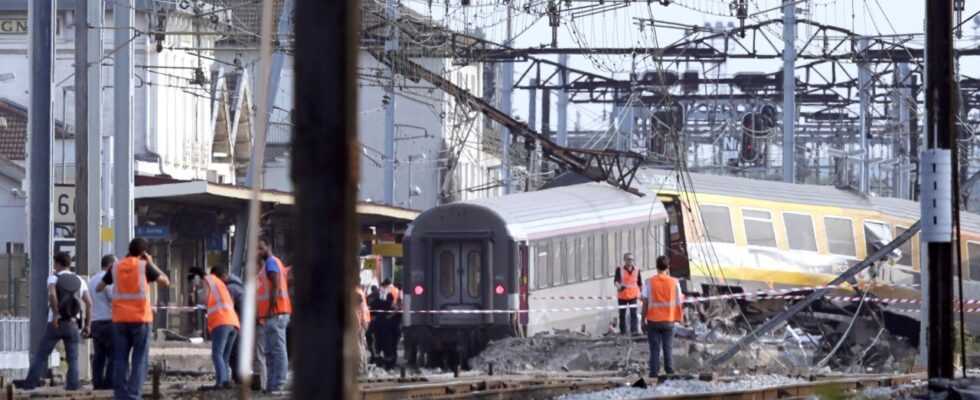That was almost 9 years ago. Seven people died in the derailment of a passenger train at Bretigny-sur-Orge station in Essonne. It linked Paris to Orléans. It is 5:11 p.m. when four people die broke on the platform and three on the train in this station known to be crossed by many trains. Dozens of travelers are also injured. The train then travels at 137 km/h for an authorized speed of 150 km/h. The investigation quickly showed that it derailed after a metal part of the track broke during the passage of the train.
Three officials on the bench of the defendants
This Monday, three officials are on the dock. Two SNCF subsidiaries: SNCF Mobilités, and SNCF Réseaux, and a 32-year-old railway worker – a local executive – who had done the last track check eight days before the tragedy.
At the heart of the investigation, and therefore of the trial, the piece of track responsible for the derailment. For the investigating judges, it is clear: it is the maintenance of the track that has been lacking. For them, the SNCF is partly responsible, whether its bodies or its representatives, they were “failing in the organization, control and performance of maintenance operations”.
“People are responsible, they did not do their job”
For many civil parties, there should have been more officials tried. “We hope that within the hearing, the causes and responsibilities will be established. We believe that the SNCF has done everything to hide the real responsibilities, the telephone tapping has revealed a lot of inconsistencies, coalitions, lies” , explains Thierry Gomes at the microphone of Europe 1.
“For us, people are responsible, they did not do their job, they endangered the safety of users, consciously or unconsciously, it will have to be determined”, he believes. He lost both his parents in the derailment of the train, and chairs the association “Entraide et defense des victims de la catastrophe de Brétigny”.
Battle of Experts
The long investigation gave rise to battles of experts. Two theses will compete in court: that of the lack of maintenance, against that of the defect of the steel, defended by the SNCF which rejects all criminal responsibility in the accident. “For the ethics of society, today we must shed light on the responsibilities, so that perhaps these accidents no longer happen. Today, the tears have stopped flowing and we are in a fight for justice and truth”, details Thierry Gomes.
The investigation indeed gave rise to scenes worthy of a detective story: the investigating magistrates had difficulty obtaining documents from the SNCF concerning the maintenance of the track concerned, transmitted without having been sorted or in a very voluminous way . Telephone tapping made the investigators think that this was even a strategy of the legal department of the SNCF, which briefed, or even debriefed the employees before or after their hearings with the police.
